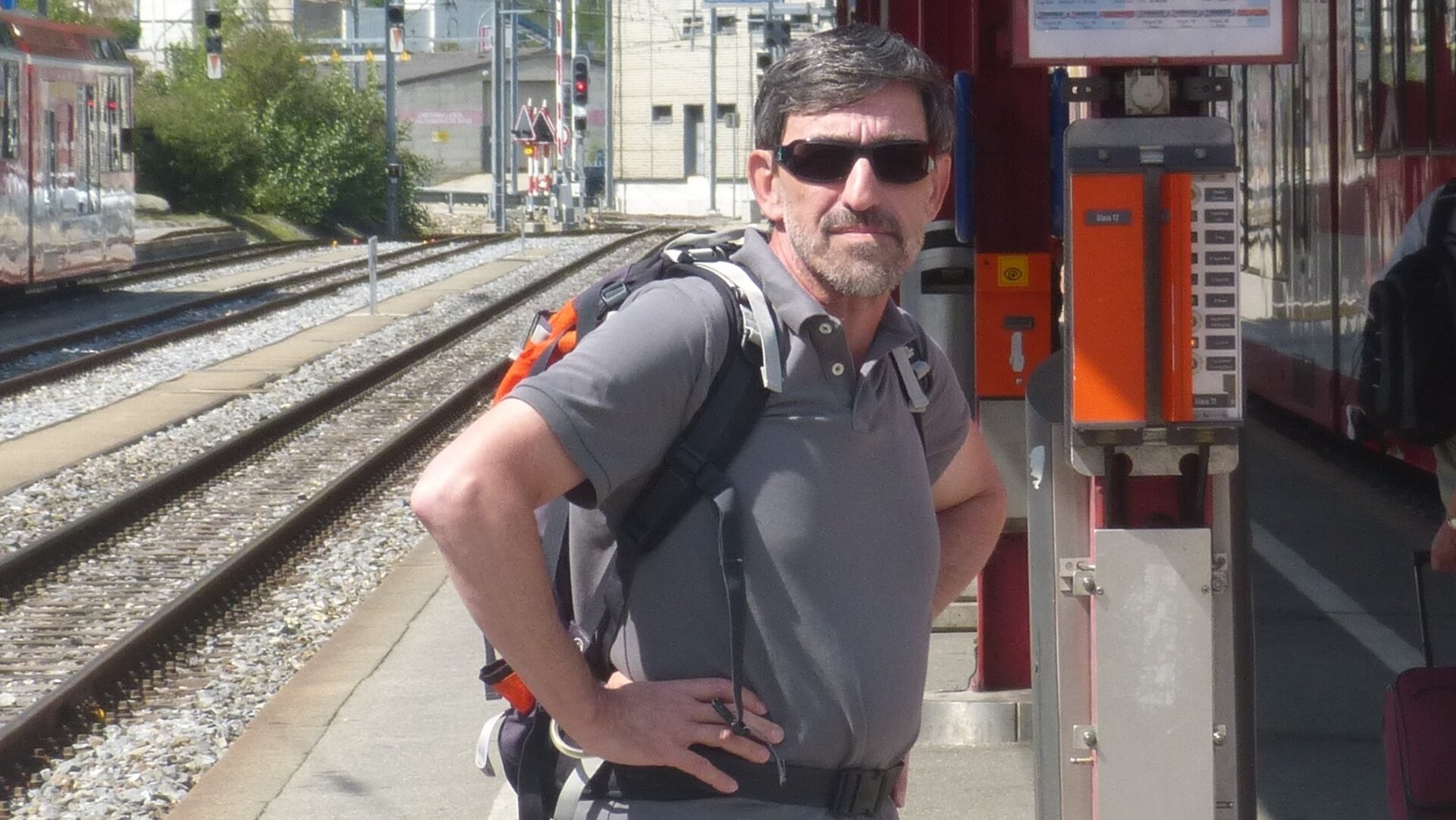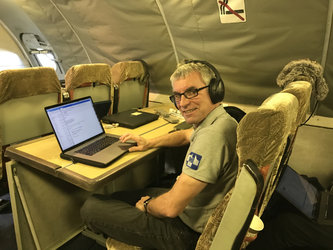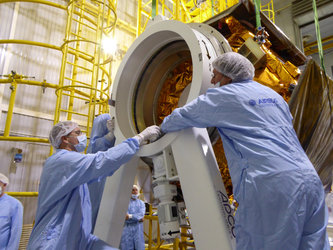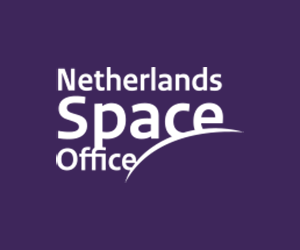Paul Ingmann: Mission Scientist
ESA’s Paul Ingmann is responsible for making sure that Sentinel-5P delivers the data that users need. His role also includes organising the Mission Advisory Group. In an interview, Paul talks about the needs of the users and the influence that these needs have on the mission.

As well as being Sentinel-5P mission scientist, Paul Ingmann also heads ESA’s Earth Observation Atmosphere Section, which provides support to satellite missions that measure different aspects of our atmosphere. Before joining ESA in 1985, he was a research associate at the University of Bonn and dealt with ground-based lightning detection systems. Since being at ESA, he has been involved in the preparation of operational meteorological satellites like Meteosat Second Generation and MetOp, and, more recently, Meteosat Third Generation and MetOp Second Generation, but also research missions like Aeolus and EarthCARE.
Paul is a German national. He earned his diploma in meteorology and PhD in astronomy from the University of Bonn, Germany. In his free time, Paul enjoys hiking in the Swiss Alps.
ESA: Given Sentinel-5P provides data for practical applications, what is the role of a mission scientist?
Paul Ingmann
Even if a mission is developed primarily for practical applications rather than for science, an interface is needed between users and engineers as they tend to ‘speak different languages’. In the case of Sentinel-5P, the main objective has always been to provide routine, systematic, high-quality data for the Copernicus Atmospheric Monitoring Service. Monitoring air quality is becoming increasingly important, not only for human health but also for ecology and the economy, and particularly in view of the EC’s clean air policy. As an end user does not necessarily need to have detailed knowledge of the satellite design, it is the duty of the mission scientist to interpret the needs of the user and translate them into technical requirements, usually referred to as ‘mission requirements’. These requirements therefore link the needs of the user with the technical design of the Sentinel-5P mission.
ESA: How do you make sure the users get what they really need?
Paul Ingmann
Continuity of measurements has played a big role in how Sentinel-5P was designed. It was developed to reduce the data gap between the Sciamachy instrument on Envisat, OMI on NASA’s Aura and the launch of Sentinel-5. The satellite carries a single instrument, Tropomi. Most of the services that will use Sentinel-5P data were initially developed using data from previous satellite instruments such GOME on ERS, GOME-2 on MetOp and Sciamachy. This means that we were able to benefit from this heritage and the ‘lessons learned’ along the way to make sure we meet user needs. For example, the need for high spatial resolution is reflected in the design of Tropomi, which offers a resolution down to a level of 7 × 3.5 km. Previous missions provided lower special resolution: GOME-2 40 x 80 km, Sciamachy 30 x 60 km and OMI 13 x 24 km.
ESA: How do you ensure the mission delivers accurate, useful data?
Paul Ingmann
This is done in several ways. Firstly, through the careful design of the instrument and satellite, as well as through detailed characterisation and testing of the instrument during the building phase. This is complemented by ground-based and airborne campaigns well before launch to demonstrate that the concept works. Secondly, in orbit we achieve this through calibration and validation using ground-based instrumentation and also through airborne campaigns and in-orbit intercalibration with other satellites carrying comparable instruments. This is done through ‘CalVal’ activities which are an essential part of the programme.
ESA: What is so special about Sentinel-5P?
Paul Ingmann
As its name indicates, Sentinel-5P is the precursor of the Sentinel-5 instrument which is under development. Sentinel-5 will be carried on the next generation of operational meteorological satellites in polar orbit, MetOp Second Generation to be operated by Eumetsat. Sentinel-5 will be complemented by a Sentinel-4 instrument that will be flown on the next generation of geostationary satellites, Meteosat Third Generation also operated by Eumetsat. So, until these other Sentinel instruments are launched, Sentinel-5P will play an essential role in providing data for forecasting and monitoring air quality around the world. It is also the first Copernicus satellite dedicated to monitoring our atmosphere.
ESA: Will you still be involved in the mission after commissioning?
Paul Ingmann
Once the mission has gone through testing and calibration in orbit, the day-to-day management of Sentinel-5P will be transferred to our colleagues working at ESA’s centre for Earth observation in Frascati, near Rome. This step is typically six months after launch. I’m actually due to retire shortly but another mission scientist will continue to be involved as part of the feedback loop on the mission design choices and will continue to monitor the evolving needs of the user community for future developments. In addition, the mission scientist will also be involved in dedicated studies looking into spin-offs that can be used for science.
ESA: So, as well as being essential for Copernicus services, the data are also of value to science?
Paul Ingmann
The mission will definitely benefit the development of new science capabilities. The long-term availability of data, for instance, benefits applications that require long-term consistent time series of data such as climate change studies. Such data might therefore become relevant in the context of climate assessments performed by the Intergovernmental Panel for Climate Change.
ESA: What has been the most rewarding aspect of your involvement in the mission?
Paul Ingmann
While I have been in the business for a number of years it is still rewarding to see that, while users and builders have quite different approaches in expressing their needs, in the end the result is a satisfying compromise between initially rather ambitious requirements and design constraints that meets the majority of the initial requirements. This also demonstrates that the role of the mission scientist is rather essential.
Editor’s note:
This is one in a series of interviews with some of the key people that are involved in the Copernicus Sentinel-5P mission. Please check back as further interviews will be added in over the coming weeks.









